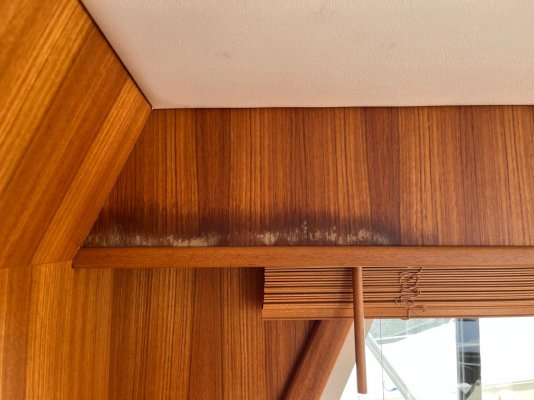arthurn
Veteran Member
- Joined
- Apr 21, 2020
- Messages
- 34
- Location
- United States
- Vessel Name
- Brown Eyed Girl
- Vessel Make
- 38ft Helmsman Trawler
I am going to show my ignorance so please forgive me.
I have a 2017 Helmsman 38 ft helmsman trawler when I noticed this damage to the wood in the pilot house. I looks like water damage but it is at the bottom of this piece of wood and not the top. The only break in the cabin top near this area is a horn. I assume water leaked thru where the wires penetrated the fiberglass top and drip over the cabin liner on to the wood. I am still confuse about why it is on the bottom and not the top. Be that as it may does anyone have any ideas how I can repair this? Can I sand it and restain it?
I am not sure what type of wood it is.
Any help would be appreciated.
Arthur
I have a 2017 Helmsman 38 ft helmsman trawler when I noticed this damage to the wood in the pilot house. I looks like water damage but it is at the bottom of this piece of wood and not the top. The only break in the cabin top near this area is a horn. I assume water leaked thru where the wires penetrated the fiberglass top and drip over the cabin liner on to the wood. I am still confuse about why it is on the bottom and not the top. Be that as it may does anyone have any ideas how I can repair this? Can I sand it and restain it?
I am not sure what type of wood it is.
Any help would be appreciated.
Arthur

